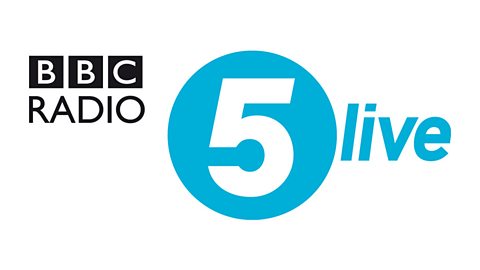Top 11 Plus Creative Writing Examples
Looking for 11 plus creative writing examples that will help your child excel in their exam? Our guide dives straight into proven strategies, and essential writing elements, and showcases top-notch examples that reflect what examiners are searching for. No fluff, just concise, practical advice to elevate your child’s creative writing skills for the 11 Plus.
Key Takeaways
- The 11 Plus Creative Writing Exam tests a wide range of writing skills including narrative, descriptive, expository, and persuasive writing, focusing on aspects such as fluency, grammar, and use of various writing techniques.
- Effective creative writing for the 11 Plus Exam requires comprehensive character development, vivid setting creation, and skilful use of dialogue, as well as understanding the marking criteria such as plot structure, vocabulary, and grammar.
- Preparation for the 11 Plus Creative Writing Exam can be supplemented with recommended books, worksheets, and online resources, and may be enhanced with the support of a tutor specialized in creative writing.
Understanding the 11 Plus Creative Writing Exam
The evaluation of students’ creative writing skills in a variety of topics is the main purpose of the 11 Plus Creative Writing Exam. This assessment usually takes around thirty minutes and may involve tasks such as continuing a plot or composing a brief response to an image prompt. The exam focuses on assessing fluency, imagination, grammar, punctuation, and overall ability to creatively write using different techniques.
Students must prepare for various types of writing styles like persuasive magazine articles or short fictional stories. Practice plays a vital role rather than relying solely on traditional study methods when it comes to this exam format, which includes both fiction and non-fiction assignments. Using accurate punctuation and diverse sentence structures adds value regardless if it’s a journal entry or a narrative piece.
Types of Tasks in the Exam
The 11 Plus Creative Writing Exam allows students to showcase their diverse writing abilities through various tasks, including narrative, descriptive, expository and persuasive writing. One task may require at least six sentences describing a specific place or situation in simple language similar to that of a child.
For instance, the types of writing tasks could include composing a short story (narrative), providing descriptions for a particular setting or circumstance (descriptive), educating readers on how to complete an action correctly through an article or instructions (expository) and persuading them towards certain thoughts or actions via letters/articles (persuasive).
Marking Criteria
Understanding the marking criteria for the creative writing section of 11 plus exams is crucial to effectively prepare. The main factors that are evaluated include plot development, vocabulary usage, incorporation of literary techniques, and grammar and spelling proficiency. In England, a framework known as ‘pupil can’ statements help assessors determine whether students meet the expected standard or demonstrate advanced skills.
After evaluation, schools receive concise feedback which may point out areas such as limited use of precise language or confusion in organizing paragraphs. This constructive criticism serves as guidance for students to improve their writing abilities and address any weaknesses identified during the assessment.
Essential Elements of Creative Writing

In the realm of creative writing, certain elements play a significant role in crafting captivating narratives. These include character development, setting building, and dialogue techniques which all contribute to the appeal of a story.
One vital aspect is character development as it adds depth and complexity to characters making them feel more real and relatable for readers. This helps enrich the writing piece overall creating an engaging reading experience.
Character Development
In the 11 Plus Creative Writing Exam, character development is crucial in captivating readers with lifelike and complex characters. The key elements to focus on are goal, motivation, and conflict when creating compelling characters.
Well-crafted characters need to exhibit consistency within their traits and behaviours while also being able to surprise readers with unexpected actions. This adds depth and authenticity to the story, making it relatable and engaging for the reader.
Setting Creation
The setting plays a crucial role in creative writing, providing the context for the story’s events. Describing it effectively is an essential skill that students can improve upon when preparing for their 11 plus creative writing exam.
One way to enhance setting descriptions and engage readers is by incorporating sensory details. Utilizing the five senses – sight, sound, smell, touch and taste – allows writers to create a vivid and captivating experience within their narrative.
Using these techniques will help bring life to your written piece as you aim to immerse your reader into its world through descriptive elements of each sense.
Dialogue Techniques
Dialogue is a crucial element in the world of creative writing as it can drive the story forward, reveal character traits, and make the storytelling more captivating. When preparing for the 11 Plus Creative Writing Exam, it’s important to follow proper dialogue formatting, which includes starting new paragraphs for each speaker and using quotation marks.
Effective dialogue goes beyond just following formatting rules. The ‘sandwich layout’ technique is recommended where writers incorporate:
- The first character’s spoken words,
- Their corresponding actions or expressions,
- The second character’s response,
- Additional descriptive details.
This method enhances conversations between characters by making them more authentic and engaging.
Enhancing Your Writing Skills

While having a natural talent for writing can be advantageous, the improvement of writing abilities typically comes from consistent practice and learning effective techniques. Developing strong writing skills is crucial in preparing for the 11 Plus Creative Writing Exam.
To enhance your creative writing skills, it can be helpful to break down the process into five phases: initiating, planning, drafting, revising and editing. Additionally, mind-mapping ideas, creating an outline, and using character profiles can also aid in improving these skills. Furthermore, the incorporation of sensory details in creative writing allows for a more immersive experience for the audience.
Planning and Structuring
Organizing and arranging play a critical role in the world of creative writing. They guarantee that the narrative has a well-defined plot, making it easily understandable for readers. The traditional story structure in this form of expression involves an introduction, development, and conclusion.
To effectively introduce their main character and set up their surroundings along with one or two supporting characters at the beginning of a tale, it is fundamental. The middle part usually includes some sort of challenge or hurdle that our protagonist must overcome.
Lastly, but just as important, the ending should include a resolution where our hero overcomes any obstacles previously presented throughout events.
Incorporating Sensory Details
In the context of writing, sensory details make use of descriptive language that appeals to a reader’s senses – such as vision, sound, taste, touch and smell. These elements contribute towards creating an engaging experience for the readers and effectively conveying the significance of events.
By incorporating sensory details into their work, writers can elevate their creative pieces by providing vivid descriptions that stimulate multiple senses in readers. By utilizing adjectives and figurative expressions to enrich these descriptions with imagery, the writer adds layers to their narrative which draw readers into it.
Sensory details have great potential in enhancing written works by offering audiences more immersive experiences by appealing directly to their various sensations. Enriching depictions with a carefully selected array of adjectives and phrases allows for a deeper understanding of events in the story while maintaining a commanding tone.
Fluent Writing
Effective writing is characterized by the ease with which readers understand the message. This can be achieved through employing idiomatic language and a straightforward writing style.
There are various techniques that writers use to improve their fluency in their creative works, including freewriting, consistent practice, and utilizing blogs as a means of enhancing skills. Restructuring complex sentences can enhance fluency by making them more concise and improving flow, tone, and clarity for better communication of ideas.
Top 11 Plus Creative Writing Examples

To gain a better understanding of the expectations and criteria for success in the 11 Plus Creative Writing Exam, it can be highly advantageous to study well-crafted examples of creative writing. In this article, we will showcase three prominent pieces – ‘A Day to Remember’, ‘The Mysterious Island’, and ‘The Power of Words’, which utilize various literary techniques to enhance their stories. These exemplars feature diverse themes and scenarios that may serve as inspiration for students looking to develop their unique narratives.
Through analyzing these works, pupils can learn about effective storytelling methods, character development strategies, how settings are created within a narrative context, and ways in which sensory language is used effectively.
Example 1: A Day to Remember
‘A Day to Remember’ is a narrative that focuses on a specific, memorable day. To effectively depict such a day in creative writing, it is recommended to start by setting the scene and providing in-depth descriptions of the setting, characters, and actions about a truly unforgettable time.
Using vivid and sensory language can help to animate the writing in the reader’s mind, thereby enhancing the story’s engagement and memory. The arrangement of the narrative holds significance in upholding a cohesive and compelling story. A distinct commencement, development, and conclusion aids readers in tracking the sequence of events throughout the day.
Example 2: The Mysterious Island
Based on Jules Verne’s novel, ‘The Mysterious Island chronicles the experiences of a group of shipwrecked individuals stranded on an uncharted island. The tale centres around their resourcefulness and struggle for survival in an unfamiliar landscape.
Literature often portrays mysterious islands as realms to be explored, filled with danger and discovery. Immerse yourself in this story through the sounds of birds chirping and waves crashing against the shore. A plethora of mysteries await on this island, captivating readers and igniting their imaginations.
Example 3: The Power of Words
The narrative ‘The Power of Words’ emphasizes the strength and impact words have in delivering powerful messages. A variety of literary devices can be utilized to highlight this, including repetition, metaphors, similes, imagery, personification and analogies.
In creative writing, using metaphorical language can enhance memory and evoke strong emotional responses from readers. This adds vividness and interest to the piece much like how an image captures a specific moment in time.
Known as emotive language or emotional language. It plays a crucial role in making words impactful by employing expressive descriptors that trigger intense emotions within the reader’s mind.
Additional Resources for 11 Plus Creative Writing Preparation
To examine models and hone writing skills, there are various other tools available for preparing for the 11 Plus Creative Writing Exam. These resources include recommended literature, practice sheets, and online materials.
Aside from self-study being effective in this regard, having an experienced tutor as a guide can be invaluable. A mentor can offer personalized advice, constructive criticism and extra materials for practice. They can assist students in identifying their strengths and weaknesses so that preparation may become more targeted and efficient.
Recommended Books
Recommended books for improving writing skills specifically geared towards the 11 Plus Exam include ‘11+ Essentials Creative Writing Examples’ and ‘Bond 11+’. The former features a collection of diverse creative writing examples, both fictional and non-fictional, that mirror the requirements of independent and grammar school exams. It covers various topics related to creative writing in detail with its compilation of 33 questions.
On the other hand, ‘Bond 11+’ is designed to enhance essential skills required for written components within subjects such as math or science on tests like the Common Entrance Examination or SATs along with providing comprehensive preparation material tailored towards passing these types of standardized exams.
Overall these two highly recommended resources offer valuable tools to improve students’ abilities in creative expression through enhanced understanding and practice suitable for their age group when facing important academic challenges ahead regarding different forms of writing at school.
Worksheets and Online Resources
Utilizing worksheets and online materials can greatly improve one’s creative writing abilities, providing a wide range of practice activities specifically designed for the 11 Plus exam. Valuable resources like Atom Learning and Twinkl offer free worksheets to aid in preparing students for their 11 Plus Creative Writing exams. These exercises are diverse and enable students to develop their skills while gaining confidence in their writing proficiency.
Considering an 11 Plus Creative Writing Tutor
Having an 11 Plus Creative Writing tutor can bring various benefits. They provide individualised support and feedback on writing abilities, making them a valuable resource for students preparing for the 11 Plus Creative Writing Test.
An ideal 11 Plus Creative Writing tutor should hold a degree in a relevant field such as Creative Writing, along with teaching or tutoring experience. They are capable of offering expert guidance and stimulating prompts to unlock your child’s creativity potential. They may offer detailed class notes, worksheets, and extra materials to supplement the learning process accompanied by thorough explanations and demonstrations of key concepts.
Summary
In essence, the 11 Plus Creative Writing Exam is a significant milestone for students to demonstrate their imaginative and writing abilities. This exam encompasses various types of writing assignments such as storytelling, depicting scenes, informative pieces, and persuasive compositions. Familiarizing oneself with the grading system and crucial components of creative writing plays a pivotal role in achieving success.
By consistently practising using recommended materials and possibly seeking guidance from an experienced instructor or tutor, students can improve their creative writing aptitude and excel in the 11 Plus Creative Writing Exam. It’s important to remember that words hold tremendous power. With proper preparation, there are no limitations on what one can accomplish.
Frequently Asked Questions
How to write creative writing 11 plus?
When attempting to compose a creative writing piece for the 11 plus exam, it is important to concentrate on developing an organised and well-structured composition with a vibrant, fluent, and imaginative style of writing. It is crucial to ensure proper use of punctuation marks, accurate grammar techniques and spellings, and incorporating exciting vocabulary in constructing elaborate yet comprehensible sentences.
Is there creative writing in the 11 exam?
The 11 exam incorporates creative writing as part of its assessment, and candidates may be required to complete assignments such as composing a unique short story or continuing an existing one based on a provided passage. These tasks evaluate the applicants’ ability in writing and storytelling.
What should I write about in creative writing?
One way to spark your writing is by drawing inspiration from personal experiences. This can include events from the past, characters based on people you know, or settings familiar to your life. Childhood memories and everyday encounters are also great starting points for a fictionalized scene or story. Alternatively, you could use writing prompts as a tool to generate ideas for your next piece of work.
What is creative writing in the English exam?
The writing portion of an English exam evaluates your skill in creating stories, building characters and settings, and utilizing vivid language to convey thoughts with proficiency.
What skills are assessed in the 11 Plus Creative Writing Exam?
The 11 Plus Creative Writing Exam evaluates one’s capacity to write creatively, as well as fluency, creativity, grammar and punctuation. Different techniques are used to assess these skills effectively.






